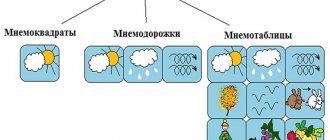An example of a description of a famous person
World historiography contains a large amount of information about various famous people.
Their psychological portraits are of particular interest.
Analysis of the individual characteristics of historical figures is carried out on the basis of the study of written testimonies of contemporaries, personal diaries of the people themselves.
With the help of physiognomy (analysis of character traits based on facial features), a psychological portrait is even drawn up from a photo.
Of great interest is the personality of Napoleon Bonaparte . His psychological portrait, compiled according to the above plan, looks like this:
- Man born in 1769 . Height - 169 cm. He suffered from epileptic seizures.
- Emperor of France , commander and statesman. Was married twice.
- Since childhood, he showed a love of reading . He experienced problems communicating with peers, because of whose bullying he was forced to spend most of his time in solitude. From an early age he showed interest in military affairs.
- Hot-tempered, purposeful, merciless, efficient, disciplined, selfish. He processed information and made decisions with lightning speed. He was an excellent tactician and strategist . Didn't like talking to people. Demonstrated a contemptuous attitude towards others. He easily fell into a state of anger, often developing into fits. Despite the presence of many internal contradictions, he outwardly tried to give the impression of a confident person. The main motive of activity is the thirst for power.
- An influential position in society and the presence of great power aggravated negative character traits that arose at an early age. Internal self-doubt gave rise to anger and contempt for others.
What is it and what is it for?
A psychological portrait is a verbal written interpretation of a personality.
This characteristic allows you to get a general idea of a person’s individual qualities and predict his behavior.
This psychological technique is actively used in professional activities , as well as for personal purposes.
Recruitment specialists analyze the abilities of job applicants, teachers, in order to successfully organize the educational process, draw up psychological portraits of the class, managers identify the personal qualities of subordinates, etc.
Each person can independently try to create a description of his personality or study someone from his environment.
Of course, to obtain the most reliable results, you should contact specialists. The professional psychological portrait of a psychologist will fully reflect all the individual characteristics of the subject.
Having information about key personality qualities, you can determine the most suitable type of activity, level of self-esteem, degree of openness to communication, determination, etc.
Compilation example
A psychological portrait, regardless of its purpose, is drawn up by a specialist. The psychologist determines the appropriate methodology in accordance with the purpose of the test. For independent analysis, you can use simplified methods. Socionics and DISC research are suitable, for example. Such tests can be taken online - they are available on the Internet.
What does a finished psychological portrait look like? An example is presented below. His conclusion is based on the results of tests by Eysenck, Mehrabian, and Cattell:
- Elena Nikiforova, student, 20 years old;
- character traits: sociability, friendliness, impulsiveness, good nature, tendency to aggression, actions under the influence of emotions, emotionality;
- temperament (Eysenck test): sanguine, easy to communicate, make friends, good ability to adapt;
- intellectual qualities (Cattell test): quick perception of information, abstract thinking;
- motivation (Mehrabian test): achieving the intended goal;
- emotionality: average stability, irritability, excitability, stubbornness;
- sociable qualities: sociability, independence, activity, desire for leadership, good adaptive abilities;
- conclusions: the results of the study are within normal limits, it is recommended to pay attention to increased suspicion.
After a detailed consideration of what a psychological portrait is, its role in the modern world becomes clear. It is used in many areas of human life: in the professional, social, and personal spheres. The psychological characteristics of an individual are an important factor in choosing a life path and career path.
IMPORTANT! Informational article! Before use, you should consult a specialist.
Rules for conducting psychological and pedagogical examination
There are fairly clear rules for drawing up a student’s characteristics. One of the fundamental requirements for conducting psychological and pedagogical characterization is objectivity . It is equally important to carefully analyze the factors influencing a child’s development as a whole, taking into account the characteristics of the student. The child should be treated as delicately as possible, minimizing any coercion or pressure on him. Only in this case can a psychological and pedagogical characterization of a student or student be as objective and useful as possible.
The student's characteristics are written by the class teacher and signed by the school director. When writing a psychological profile of a child, you may need the help of a school psychologist, testing and diagnostic results.
Class research using method No. 1
Research method. Questionnaire for students
Last name, first name _____________________________________________________ Class __________ Age ________________
1. Are you interested in lessons?
______________________________________________________________
2. Does the teacher help you if you don’t understand something?
______________________________________________________________
3. Do you turn to the teacher if you don’t understand something?
______________________________________________________________
4. Do you try to behave in such a way as to gain the teacher's approval?
______________________________________________________________
5. Does your teacher take you to the theater or on excursions? ______________________________________________________________
6. Does the teacher explain how to prepare homework?
_______________________________________________________________
7. Does your teacher help you sort out a quarrel with your classmates? ______________________________________________________________
8. Would you like a different teacher? ______________________________________________________________
9. Underline the words that, in your opinion, apply to your teacher:
- sensitive - indifferent,
- caring - inattentive,
- strict - soft,
- good - evil,
- fair - dishonest.
10. Do you like it in your class? ______________________________________________________________
Questioning students helps to find out the degree of positive attitude of 4th grade students towards their class teacher. The survey results showed a generally high degree of positive attitude towards the teacher on the part of students.
The survey can be conducted anonymously depending on the setting and objectives of the study for primary and secondary school levels. It is advisable to take into account the age characteristics of the respondents.
Processing student questionnaire data
The answer “yes” to all questions except No. 8 is scored 1 point (accordingly, the answer “no” for them is scored 0 points). According to No. 8, 1 point is given for the answer “no”, 0 points for the answer “yes”. For No. 9, we calculate the sum of the first (positive) underlines (except for the pair of antonyms “strict-soft” - according to it, the choice “soft” is considered a positive answer for children). If it is 3 or more, then put 1 point opposite No. 9.
This is also important to know:
How to write a reference for a primary or high school teacher
Thus, the maximum average indicator of positive attitude towards the teacher and the class is 1.0 points, the minimum is 0 points. Also, for each question, we calculate the group average based on the data of all children in the class, including the total amounts for all questions for each child.
DEFINITION OF CHARACTER
CHARACTER
- a set of personality traits that determine typical ways of responding to life circumstances.
Character
- this is a set of stable personality traits that determine a person’s attitude towards people and the work performed. Character is manifested in activity and communication (like temperament) and includes what gives a person’s behavior a specific, characteristic shade (hence the name “character”).
Character can be found in the characteristics of the activities that a person prefers to engage in. Some people prefer the most complex and difficult activities; for them it is a pleasure to seek and overcome obstacles; others choose the simplest, hassle-free paths. For some, it is important with what results they completed this or that work, whether they managed to surpass other people. For others, this may not matter, and they are content with the fact that they did the job no worse than others, achieving mediocre quality.
When communicating with people, a person’s character is manifested in his behavior, in the way he responds to people’s actions and actions. The manner of communication can be more or less delicate, tactful or unceremonious, polite or rude. Character, unlike temperament, is determined not so much by the properties of the nervous system as by a person’s culture and upbringing.
A person’s character is what determines his significant actions, and not random reactions to certain stimuli or prevailing circumstances. The action of a person with character is almost always conscious and deliberate, and can be explained and justified, at least from the position of the actor. When talking about character, we usually put into our idea of it a person’s ability to behave independently, consistently, regardless of circumstances, showing his will and perseverance, determination and perseverance. A characterless person in this sense is one who does not show such qualities either in activity or in communication with people, goes with the flow, is dependent on circumstances, and is controlled by them.
In its formation, development and functioning, a person’s character is closely related to temperament. The latter represents the dynamic side of the character. Character, like temperament, is quite stable and little changeable.
4 pp., 1737 words
The purpose of using a psychological portrait
A psychological portrait is important in choosing a life path and future profession. It is drawn up before entering the university, since this is the time to determine further activities. Using a psychological portrait of a person will help you find “your” activity, from which he will receive not only profit, but also pleasure.
In addition, a psychological portrait is a tool that allows you to get to know a person better, his abilities, and behavioral characteristics. It helps to identify the strengths and weaknesses of an individual, his tendencies to lies and conflicts.
To be confident in yourself, to be able to defend your position and identify lies from your interlocutors, you need competent work from a specialist, for example, the psychologist-hypnologist Nikita Valerievich Baturin.
Many job candidates undergo testing conducted by HR managers. Its purpose is to determine the personal qualities and professional abilities of a potential future employee. A ready-made psychological portrait of a person helps managers recognize and predict a person’s actions in a specific difficult situation, his ability to solve emerging problems, and identify the qualities necessary for an employee occupying a certain position.
In relation to children, a psychological portrait helps teachers find the optimal approach to them. For parents, it is important in terms of knowledge of child psychology, determining the correct course of raising a child in accordance with his temperament.
Today, people often ask psychologists to create a psychological profile in order to identify similar qualities of a potential life partner. The previously known rule “plus and minus attract” no longer applies. It is known that people with opposite characters will not be able to find a common language. To avoid disputes and conflicts, partners must have similar temperaments, similar values, and goals.







